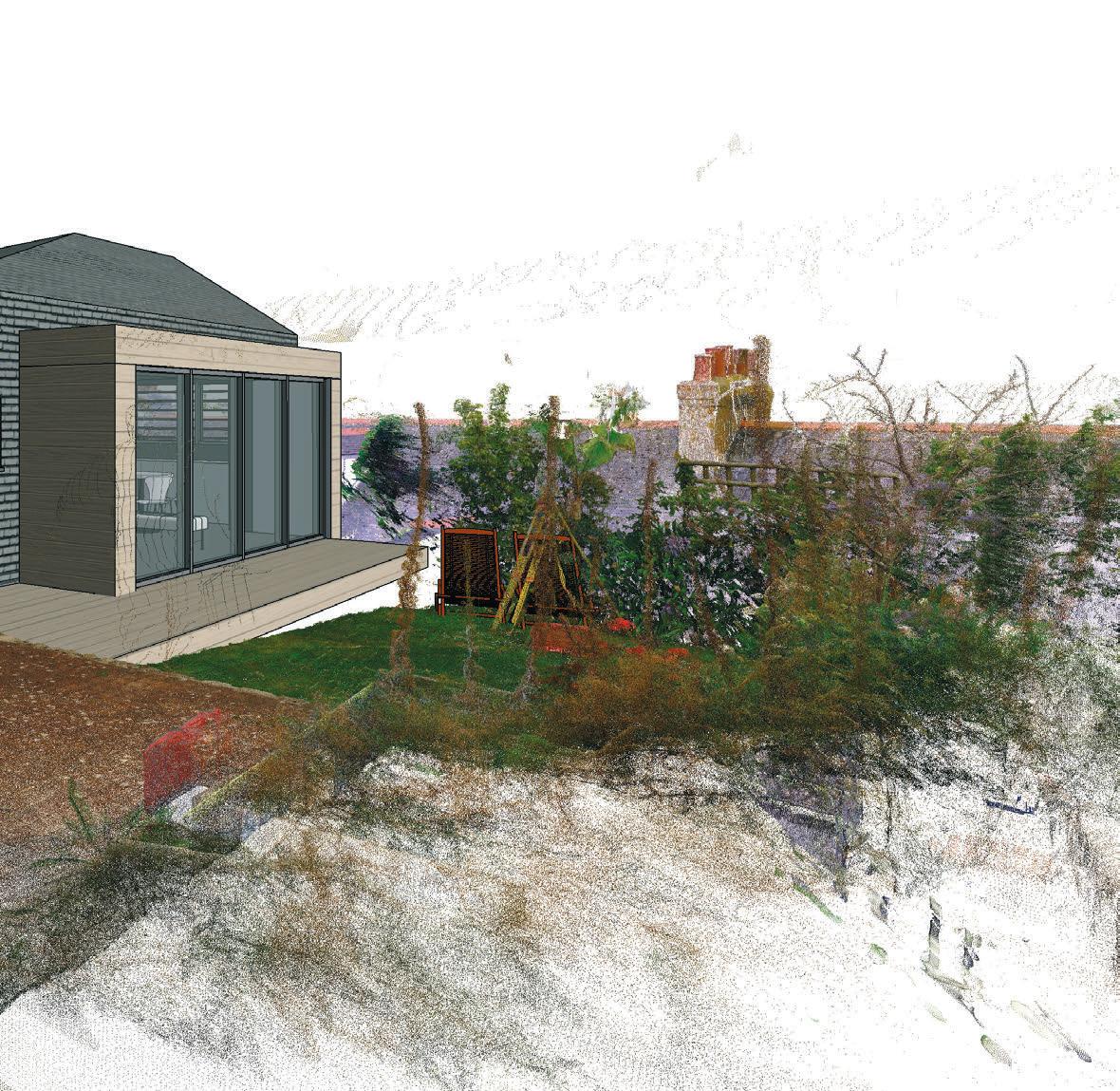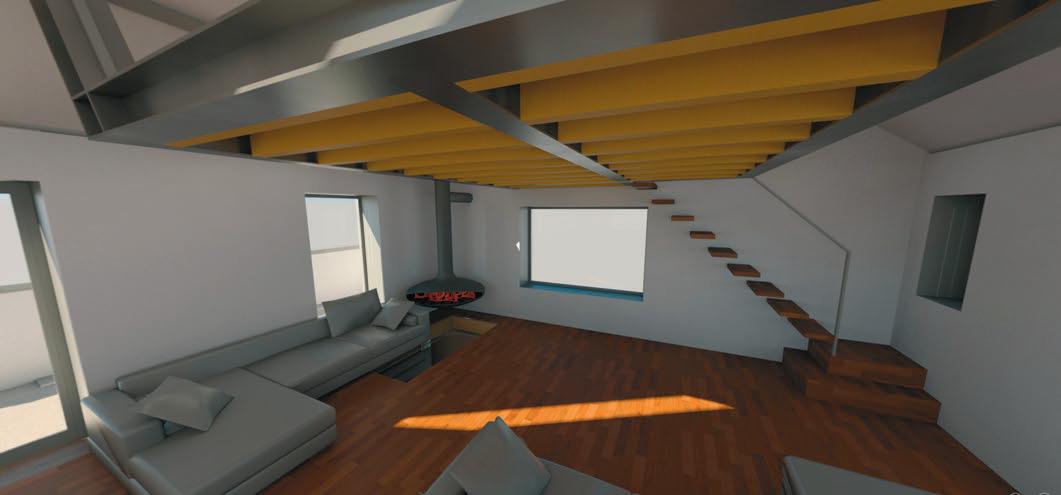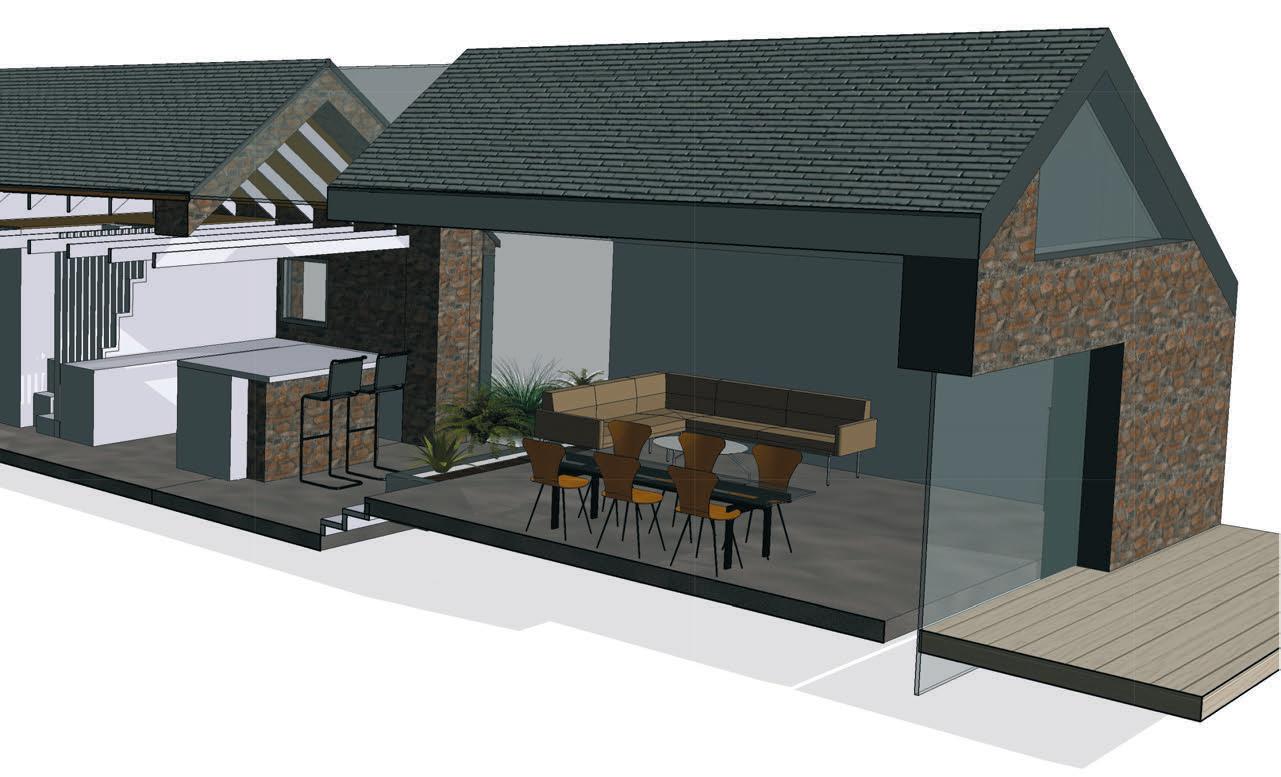
7 minute read
projects
BIM for small projects
What works for building the Crossrail project may not work for the development of an artist’s studio in Cornwall, but small and medium-sized projects can still benefit from BIM, writes architect Jacob Down.
For architectural practices that work on projects of a predominantly small-scale nature, it’s easy to see why the adoption of BIM Level 2 may not be at the top of the agenda.
Take, for example, just a few of the key documents involved. There’s BS 1192:2007+A2:2015, PAS 1192-2:2013, PAS 1192-3:2014, BS 1192-4:2014, PAS 11925:2015. The list goes on, and you need to implement these alongside the Uniclass 2015 classification, the NBS BIM Tool Kit and the CIC BIM Protocol.
Despite all the industry hype surround-

Barnoon Pod, St. Ives by Poynton Bradbury Wynter Cole Architects
ing BIM’s improved productivity, coordination and efficiencies, the sudden adoption of a myriad of standards, specifications and protocols could potentially be paralysing to any project without sufficient prior expertise, experience and knowledge.
That said, there are still many benefits to be exploited through the utilisation of BIM technologies on small projects without the need to delve deeply into the realms and complexities of BIM Level 2.
Through the simple adoption of a BIM software package, in lieu of conventional 2D drafting and 3D modelling software, architects and designers can quickly tap into some of its inherent advantages and efficiencies.
Reality-captured site geometry Over the last 18 months, there has been a fundamental shift in the tools and techniques used by surveyors to capture the spatial volumes and site features of landforms and buildings.
With the rise of reality-capture technologies like 3D lidar scanning and aerial drone photogrammetry, now common across the construction industry, aligning one’s design tools to enable full utilisation of this site-specific data makes logical sense.
Access to such a wealth of accurate site geometry and high-definition visual content is unprecedented and utilisation of a point cloud-compatible BIM software package enables this data to be referenced and interrogated directly within the design/model space.
For the small-scale architectural project, this opens up huge design opportunities through the potential creation of highly bespoke spaces that begin to truly
(Right) Extension for Mount Douglas Farm at Lelant, St. Ives (Below) Virtual Reality model of Rock House, St. Ives
respond to site-specific conditions. It’s a powerful resource on projects involving alterations to existing and listed buildings, sites of a highly sensitive nature or contentious sites where party walls or rights to light maybe involved.
The ability to visualise and reference the reality-captured context within accuracies of +/– 1mm precision will provide a new level of design confidence that has yet to be fully explored within the industry.
Over the past twelve months, Poynton Bradbury Wynter Cole Architects has utilised the benefits of reality-captured site geometry on a number projects, enabling proposals to be digitally interrogated and visually represented from any viewpoint.
This not only includes external viewpoints, like a typical approach or street perspective, but also the illustration of future views through the windows of the proposal itself or existing views from neighbouring properties.
This has provided clients, planners and members of the public with a much better understanding of the proposal in question. The practice’s ability to confidently generate such information on demand to millimeter precision, meanwhile, has aided these projects to successful planning outcomes. Design coordination Putting aside the data rich content of the BIM model and focusing on its 3D geometry as the primary means of coordination is another way BIM technology can be utilised.
The 3D model space provides a digital environment not only to construct architectural elements but also to coordinate and interrogate the design proposals of different disciplines.
On projects of a small-scale nature, the biggest barrier seems to be the ability for the design team consultants to possess or acquire the relevant expertise and skillsets to contribute to the production of 3D information in a compatible format, with many still opting for 2D drawing outputs.
Thus, in order to successfully coordinate this information, key structural and M&E elements can be modelled into the 3D model space purely as a validation and coordination exercise.
From the architect or lead designer’s perspective, this not only facilitates the detection of any potentially clashes, but also helps inform and control aesthetic design decisions through the visual interrogation of the digital geometry and proposed materials.
Luckily, on projects of a small scale nature like the ones being discussed in this text, this should be a fairly simple undertaking - one in which the benefits of having a coordinated digital 3D model far outweigh the labour involved.
I commonly undertake that kind of exercise for the structural elements of projects, where the appointed structural engineer is not yet operating in a BIM environment. As BIM becomes more widespread among smaller-scale practices and design team consultancies, I anticipate that such exercises should in turn become obsolete.

Automation and human error Within BIM software packages lie a whole series of automated functions that are geared towards the efficient production and coordination of construction information.
Mundane tasks such as the scheduling of doors, windows, sheets and room areas are automated. Drawing revisions are tracked and recorded within the project file, and drawings are extracted directly

from the 3D model geometry. As long your 3D geometry is correct, you can be confident that the 2D geometry in the resultant plans, sections and eleva- mations, stereoscopic tions are an accurate representation of panoramas, real-time VR and that 3D geometry. mobile BIM viewing. Such outputs are
These automated functions omit tasks either facilitated through the software that might have historically been done by itself, or are very attainable through ers will now have human input and, in doing so, greatly additional software and applications. the tools in-house to create their own reduce the margin for human error, These more immersive forms of archi- glossy productions and VR experiences, resulting in the efficient production of tectural representation have been directly from their BIM geometry and higher quality and more accurate infor- embraced in recent years in playful, cre- material data. mation. ative ways by Poynton Bradbury Wynter These modes of architectural represen-
Automation capacity and data manage- Cole Architects. tation and communication can be highly ment can be extended furthermore As far back as two Christmases ago, we seductive and add significant value to through the use of third-party plug-ins used augmented reality (AR) to impose any project, regardless of its size. and open source visual scripting tools; the digital BIM models of recently com- In conclusion, BIM Level 2 is a result of dissolving the barriers of the pre-pack- pleted projects onto the top surface of over two decades of government reportaged BIM software and facilitating the wrapped Christmas presents. These ing, with the intention of improving cost, creation of unique solutions value and carbon perforthat may become the workflows of the future. An example is my own ‘‘ These more immersive forms of architectural mance through the use of sharable asset information on large-scale government recent discovery of XRev representation have been embraced in recent projects such as Heathrow UpRev, a third-party plugin for Revit 2017. This years in playful, creative ways by the team at Terminal 5. BIM Level 2 provides the enables the user to apply a Poynton Bradbury Wynter Cole Architects industry with a suite of revision to multiple sheets in a single action, something not possible natively within the presents were given to clients and guests, ’’ achieve this. specifications, standards and protocols to best software. As trivial as this sounds, it is a enabling them to freely rotate and move It’s certainly true that what works for godsend when large lists of sheets are in physical space to explore scaled-down the £14.8bn Crossrail project across ceninvolved, especially with deadlines digital models of proposals, via an tral London is not necessarily going to looming. iPhone. work for a £50k artist’s studio in St. Ives, More recently, non-locomotive stereo- Cornwall. Adding value through 3D visualisation scopic virtual reality (VR) has been imple- That said, many benefits of BIM are Instrumental to BIM software is the pro- mented through coupling of iPhones and scalable – downwards as well as upwards. duction of a 3D model from which design Google Cardboard-like headsets, to pres- It is through their adoption on small to information is coordinated and project ent proposed interiors not only for client medium-sized projects that the potential data is extracted. The inherent existence review but also for end-user consultation exists for a more organic evolution of this 3D geometry facilitates the pro- and educational purposes. towards BIM Level 2. And that evolution duction of multiple 3D representations The existence of this 3D geometry is should be driven from the bottom up, and visualisations – from simple per- likely to lead to a reduction in the out- rather than imposed from the top down. spective lines drawings, exploded axono- sourcing to third-party rendering ser- ■pbwc.co.uk metrics and rendered imagery, to 3D ani- vice providers, as architects and design- ■jacobdown.co.uk








